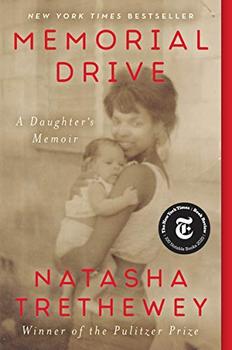Summary | Excerpt | Reading Guide | Discuss | Reviews | Beyond the book | Read-Alikes | Genres & Themes | Author Bio

The Secret History of a Murder in Mississippi
by Wright ThompsonA shocking and revelatory account of the murder of Emmett Till that lays bare how forces from around the world converged on the Mississippi Delta in the long lead-up to the crime, and how the truth was erased for so long.
Wright Thompson's family farm in Mississippi is 23 miles from the site of one of the most notorious and consequential killings in American history, yet he had to leave the state for college before he learned the first thing about it. To this day, fundamental truths about the crime are widely unknown, including where it took place and how many people were involved. This is no accident: the cover-up began at once, and it is ongoing.
In August 1955, two men, Roy Bryant and J.W. Milam, were charged with the torture and murder of the 14-year-old Emmett Till in Money, Mississippi. After their inevitable acquittal in a mockery of justice, they gave a false confession to a journalist, which was misleading about where the long night of hell took place and who was involved. In fact, Wright Thompson reveals, at least eight people can be placed at the scene, which was inside the barn of one of the killers, on a plot of land within the six-square-mile grid whose official name is Township 22 North, Range 4 West, Section 2, West Half, fabled in the Delta of myth as the birthplace of the blues on nearby Dockery Plantation.
Even in the context of the racist caste regime of the time, the four-hour torture and murder of a Black boy barely in his teens for whistling at a young white woman was acutely depraved; Till's mother Mamie Till-Mobley's decision to keep the casket open seared the crime indelibly into American consciousness. Wright Thompson has a deep understanding of this story—the world of the families of both Emmett Till and his killers, and all the forces that aligned to place them together on that spot on the map. As he shows, the full horror of the crime was its inevitability, and how much about it we still need to understand. Ultimately this is a story about property, and money, and power, and white supremacy. It implicates all of us. In The Barn, Thompson brings to life the small group of dedicated people who have been engaged in the hard, fearful business of bringing the truth to light. Putting the killing floor of the barn on the map of Township 22 North, Range 4 West, Section 2, West Half, and the Delta, and America, is a way of mapping the road this country must travel if we are to heal our oldest, deepest wound.
Thompson believes details matter. "The tragedy of humankind isn't that sometimes a few depraved individuals do what the rest of us could never do. It's that the rest of us hide those hateful things from view, never learning the lesson that hate grows stronger and more resistant when it's pushed underground." And yet, even with that intention, it's not the story of Emmett Till itself that shapes The Barn into its greatness. Thompson offers a cogent argument that the culture of Mississippi murdered Till just as much as the cohort of men in the barn. He presents as evidence grains of racism like soil in which hate is an organic fertilizer. It reveals itself first in the mud and then in the root, and then grows the tree and bends the leaves and permeates the air and water and men swallow it...continued
Full Review
 (1352 words)
(1352 words)
(Reviewed by Valerie Morales).
 The plan had to be executed perfectly by Willie Reed, an eighteen-year-old native of the Mississippi Delta. He had to walk into the darkness by himself making sure his bearings were correct. He had in his possession a coat and another pair of pants. He had to walk six miles on rural roads absent of all light. That would protect him, the inky night. The Drew-Cleveland Road was close to the edge of the Dockery Farms. Willie Reed kept walking.
The plan had to be executed perfectly by Willie Reed, an eighteen-year-old native of the Mississippi Delta. He had to walk into the darkness by himself making sure his bearings were correct. He had in his possession a coat and another pair of pants. He had to walk six miles on rural roads absent of all light. That would protect him, the inky night. The Drew-Cleveland Road was close to the edge of the Dockery Farms. Willie Reed kept walking.
"If someone wanted to kill you, there would be nobody to hear you scream. If someone approached, there would be no place to hide. The road was by far Reed's safest option, lined with poor black families," explains Wright Thompson in his stunning book The Barn: The Secret History of a Murder in ...

If you liked The Barn, try these:

by Winfred Rembert
Published 2023
Winfred Rembert grew up in a family of Georgia field laborers and joined the Civil Rights Movement as a teenager. He was arrested after fleeing a demonstration, survived a near-lynching at the hands of law enforcement, and spent seven years on chain gangs.

by Natasha Trethewey
Published 2021
A chillingly personal and exquisitely wrought memoir of a daughter reckoning with the brutal murder of her mother at the hands of her former stepfather, and the moving, intimate story of a poet coming into her own in the wake of a tragedy.
Education is the period during which you are being instructed by somebody you do not know, about something you do ...
Click Here to find out who said this, as well as discovering other famous literary quotes!